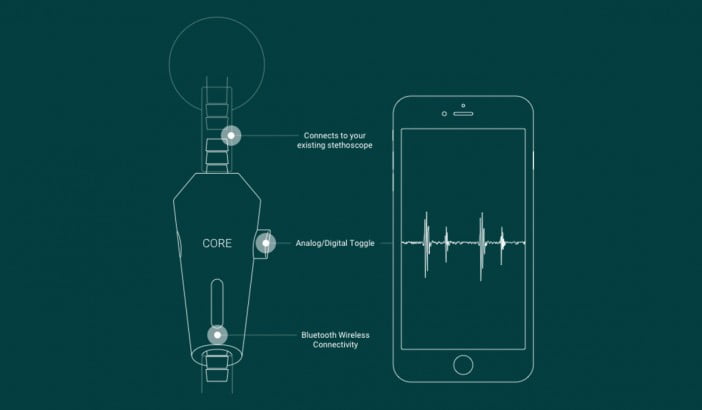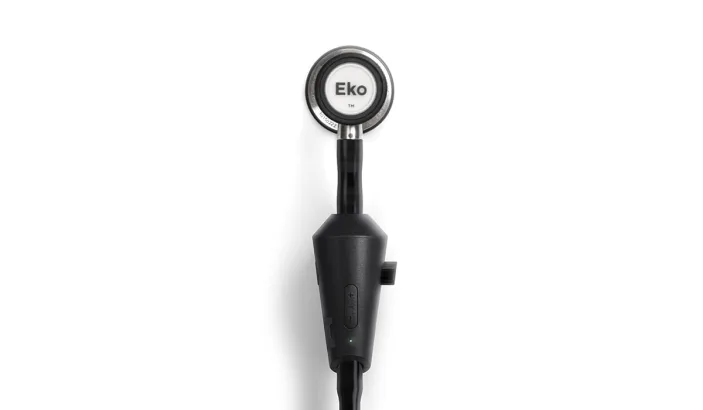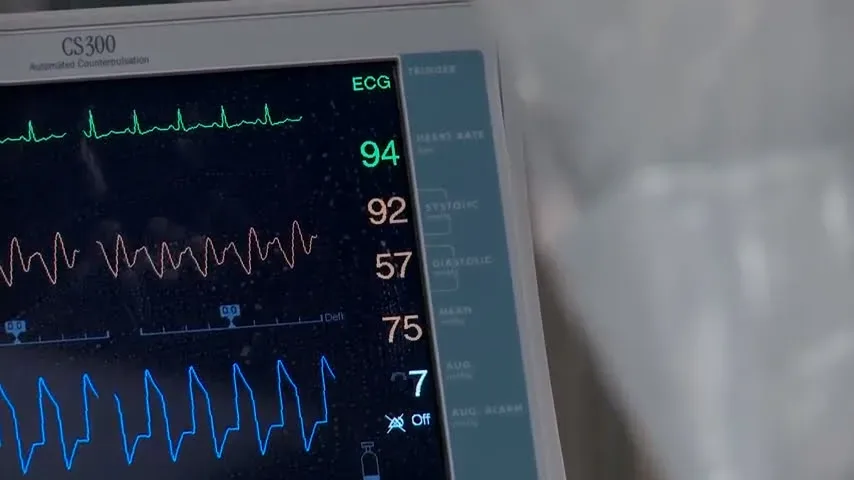What is a Stethoscope?
The stethoscope is an audible medical device used for diagnosis or listening to an animal or human body’s inner sounds.
The first Stethoscope was created in France in 1816 by Rene Laennec. It is comprised of a wooden tube.
Parts of a Stethoscope
- The most commonly used Stethoscope has a small disc-shaped resonator that is placed on the chest.
- The stethoscope has two ear tubes that are connected to the earpieces.
- It also consists of Bell that is used to listen to low-pitched sounds like heart sounds.
- It also contains a diaphragm that is used to listen to high-pitched sounds.
Its types
- Acoustic Stethoscope
- Electronic Stethoscope
Uses
- The stethoscope is used to listen to the sounds of the lungs and heart.
- The stethoscope is generally used to listen to the sounds of intestines and blood flow in the arteries and veins.
- The stethoscope is also used in connection with a sphygmomanometer for measurements of the blood pressure.
What is a digital stethoscope?
A digital stethoscope’s main objective is to improve and upgrade the listening performance and convey heart and lungs sounds clear, and supports software associated with its use. Also, high-end digital stethoscopes provide advanced capabilities and capacities such as audio recording and playback.
The digital stethoscope also provides data and information to visually chart results by linking to an off-instrument display such as a computer monitor. This advanced functionality enhances and upgrades the physician’s diagnostic capability.
The Eko Core Digital Stethoscope

It consists of the following features:
- Digital and analog modes
- Wireless Bluetooth
- HIPAA compliant software
- Free Eko mobile app
- Convenient for almost all single tubed stethoscope
- Battery40x sound amplification
- Rechargeable
- Supports 7 volume levels for listening comforts and relief
- Sound recordings
- Electronic health records
- HIPAA sharing
- Telemedicine live streaming
Also, read Digital Health; The Good, The Bad.
Uses
Since it is a ‘digital’ stethoscope and the utility of digital things is generally very diverse, it has plenty of uses.
Telemedicine
Stethoscope sounds can be shared with the remote monitoring clinicians using Eko store and telemedicine live stream software. Eko core can comfortably work wirelessly or even with the wire. It works with your telemedicine hub. It requires a USB port and a microphone jack.
- It supports live stream with video conferring.
- It builds a better experience with SDK for Windows, iOS, and Android.
Education
The Eko Core Digital Stethoscope can be used in the classroom to study common heart sounds.
- It records playback
- It also allows sharing.
- It also supports a library that contains pre-recorded sounds.
- It also allows live streaming.
Advantages of the Eko Core Digital Stethoscope
- The Eko Core Digital Stethoscope is easy and effortless to switch between analog and digital signals.
- The Eko Core Digital Stethoscope has a simple and elementary setup.
- The Eko Core Digital Stethoscope has telemedicine and EMR integration.
- The Eko Core Digital Stethoscope is a pleasant, delightful, and useful app.
- The Eko Core Digital Stethoscope has a good battery life; 21-day average use between charges.
Disadvantages of the Eko Core Digital Stethoscope
- In the Eko Core Digital Stethoscope, there is no analysis of the app.
- The Eko Core Digital Stethoscope is comparatively big and heavy in contrary to other stethoscopes.
Conclusion
The Eko Core Digital Stethoscope is a great revolution in the healthcare sector. It is a handy and applicable device for transferring heart and lung sounds, and it also supports software at the same time.







Share Your Thoughts